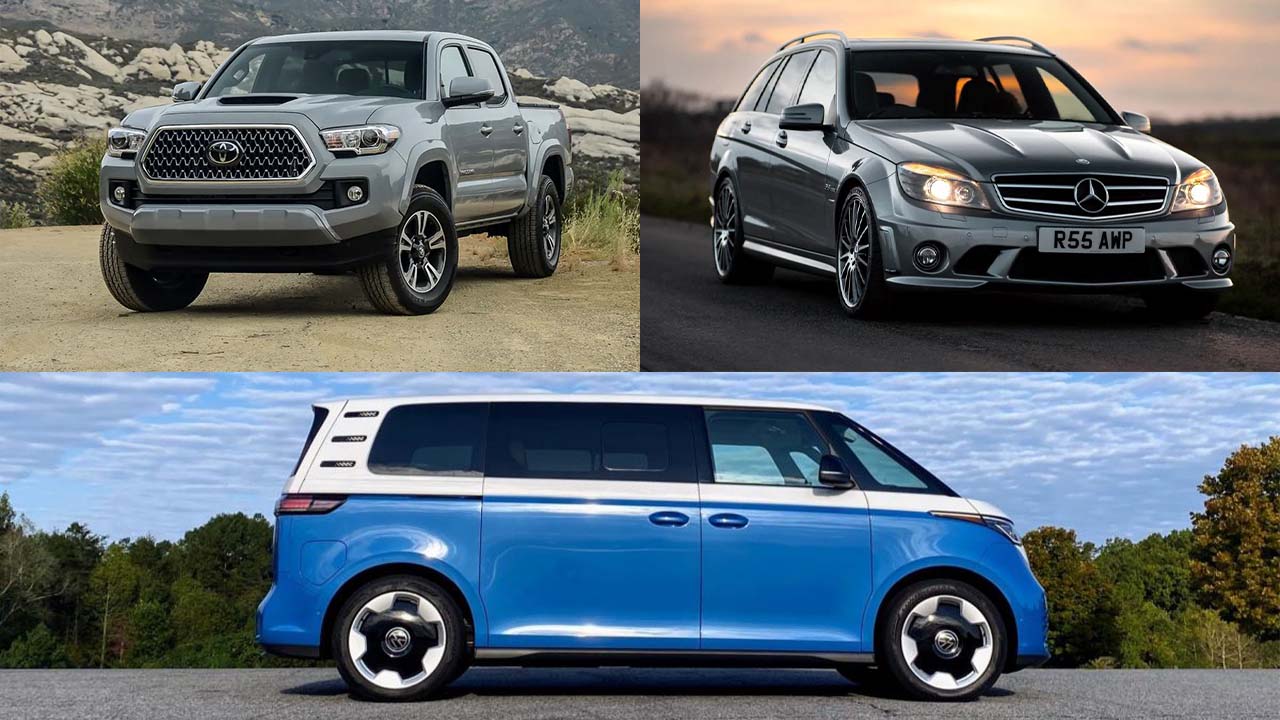Being cool is entirely subjective. It varies based on the audience and individual preferences.
This explains why a 1964 Porsche 911 might attract a larger crowd at a Cars and Coffee event than a brand-new Lamborghini parked right next to it.
Our definition of the coolest new vehicles on the market today covers a broad spectrum.
However, each car on this list is certain to turn heads and draw a significant crowd, whether at an off-road vehicle (ORV) park, during a track day, or at a late-night car meet.
1. Ford Mustang GTD
Named after the GTD class in which the Mustang GT3 competes, the Mustang GTD is far more than a street-legal race car.
Free from the constraints of racing regulations, it produces over 800 horsepower about 250 more than the less powerful GT3 race car.
With active aerodynamics and a variety of advanced engineering features banned in professional racing, the GTD is intentionally extreme.
Its only rival in absurdity might be its price tag, which exceeds $300,000. While nearly every Mustang has a cool factor, few in stock form can draw a crowd quite like the GTD.
After more than 18 months since its debut, the Ford Mustang GTD has officially entered production. Ford CEO Jim Farley confirmed that the first 10 units of the carbon-bodied, high-performance Mustang are being assembled at the same facility that previously built the GT supercar.
With production underway, customer deliveries are expected to begin soon. Farley shared the update during an appearance on the podcast “Spike’s Car Radio” with hosts Spike Feresten and Jonny Lieberman, stating that the car has successfully made it through all the “engineering and supply chain stuff” and is now officially under construction.
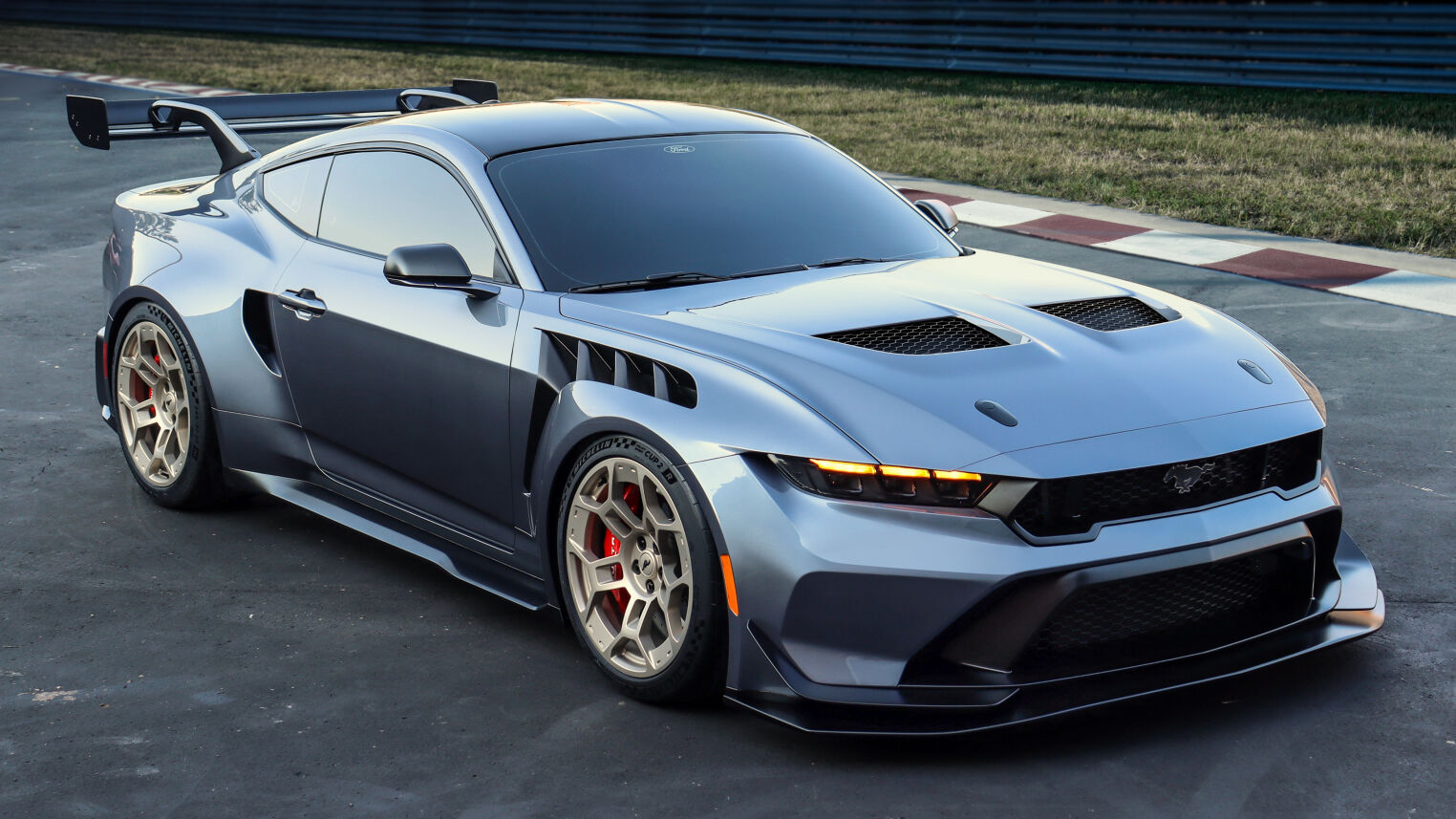
Priced at a base MSRP of $300,000, the 2025 Ford Mustang GTD is powered by a 5.2-liter supercharged V8 engine producing 815 horsepower and 664 lb-ft of torque. It accelerates from 0 to 60 mph in 3.5 seconds and reaches a top speed of 202 mph.
Although street-legal, the GTD has been designed with a focus on track performance. According to Farley, “Normally, Mr. Ford gets the first one, as it should be.”
He was referring to William Clay Ford, Jr., the executive chair of Ford’s board and great-grandson of Henry Ford. Once he receives his car, deliveries to other customers—who have submitted their configuration requests—should follow soon.
While the GTD can be driven on public roads, Farley emphasized that several of its features are best experienced on a race track.
For instance, the active aerodynamics and drag reduction system are most effective at higher speeds that would not be practical—or legal—on regular roads.
“Of course, we all want to activate the active aero, so we’re always going too fast in a straight line to see the rear wing change,” he said, laughing along with Feresten and Lieberman.
Farley, who has been closely involved in the GTD project, admitted that the production version of the car still managed to surprise him. “At least for me personally, the rear suspension was a lot more distracting and active than I expected,” he said.
“I wound up looking in the back seat all the time. You’re not used to seeing a pushrod suspension in a production car, and it actually works really hard in the back.”
He also highlighted the active height control system, which was borrowed from the now-retired GT supercar, noting that it turned out to be more enjoyable to use in the Mustang than he had anticipated.
Also Read: Best 10 4&4 Cars to Drive in 2025 Offering Comfort and Off-Road Capability
2. Volkswagen ID Buzz
Loved by many and eagerly awaited by nearly everyone, the ID Buzz van revives the legendary shape and design of the classic VW Bus, with particular nods to the now highly valuable first-generation model.
Positioned as a premium people mover loaded with distinctive style, the Volkswagen ID Buzz is exactly the kind of nostalgic revival people are excited to see.
Just like the original Bus, the Buzz begins as a rear-wheel-drive model, which means it should be both efficient and stylish while transporting all your passengers.
The Volkswagen ID. Buzz is an all-electric minivan that blends retro-inspired design with modern electric vehicle (EV) technology.
Drawing from the iconic VW Type 2 Microbus, the ID. Buzz offers a contemporary take on a classic, aiming to provide both nostalgic appeal and practical utility.
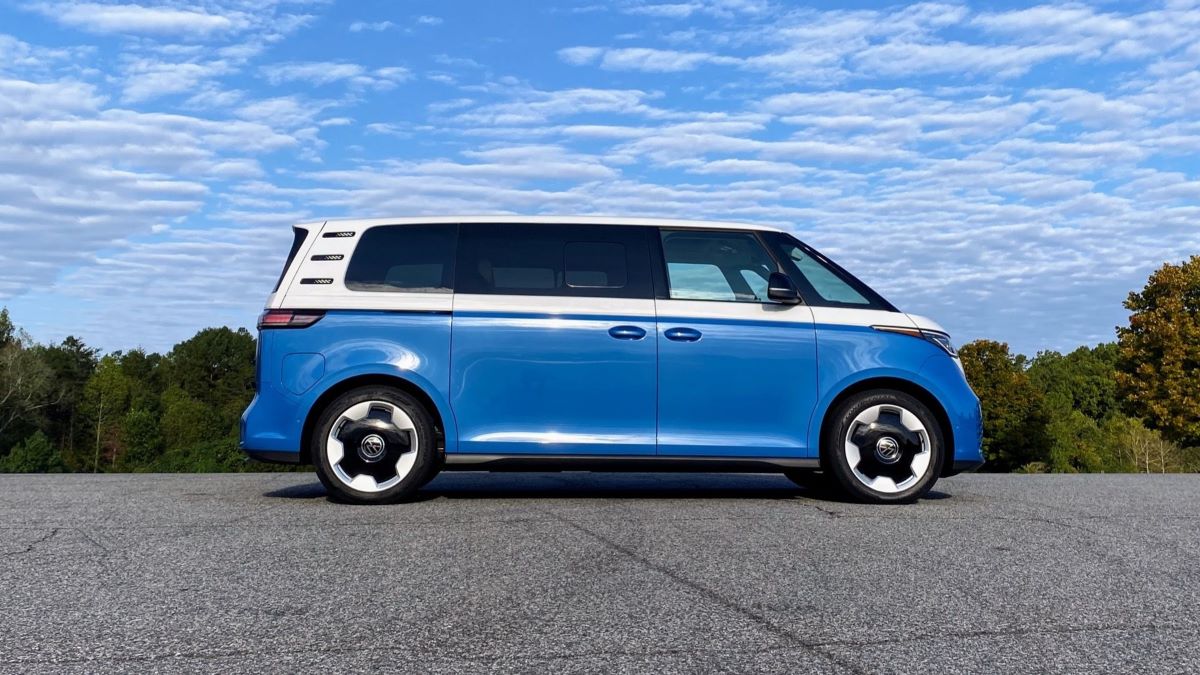
The ID. Buzz features a distinctive two-tone exterior and a spacious interior designed to maximize passenger comfort and cargo capacity.
With seating for up to seven passengers, it offers over 160 cubic feet of interior space and 145.5 cubic feet of cargo capacity when the second row is folded and the third row is removed.
An available electrochromic glass roof allows for adjustable transparency, enhancing the cabin’s openness and natural light.
Built on Volkswagen’s MEB platform, the ID. Buzz comes with an 86.0-kWh battery pack. It is available in both rear-wheel-drive (RWD) and all-wheel-drive (AWD) configurations.
The RWD model delivers 282 horsepower and accelerates from 0 to 60 mph in approximately 7.4 seconds, while the AWD variant offers 335 horsepower with a 0 to 60 mph time of around 6.0 seconds.
Volkswagen estimates that the ID. Buzz RWD model offers up to 234 miles of range per charge, while the AWD version provides up to 231 miles.
In real-world testing, these figures may vary, with the AWD model achieving around 190 miles and the RWD model about 180 miles at highway speeds. The vehicle supports DC fast charging, allowing the battery to charge from 10% to 80% in approximately 26 minutes.
3. Lamborghini Huracán Sterrato
What could be cooler than a Lamborghini supercar? A Lamborghini supercar built to kick up rooster tails and catch some air.
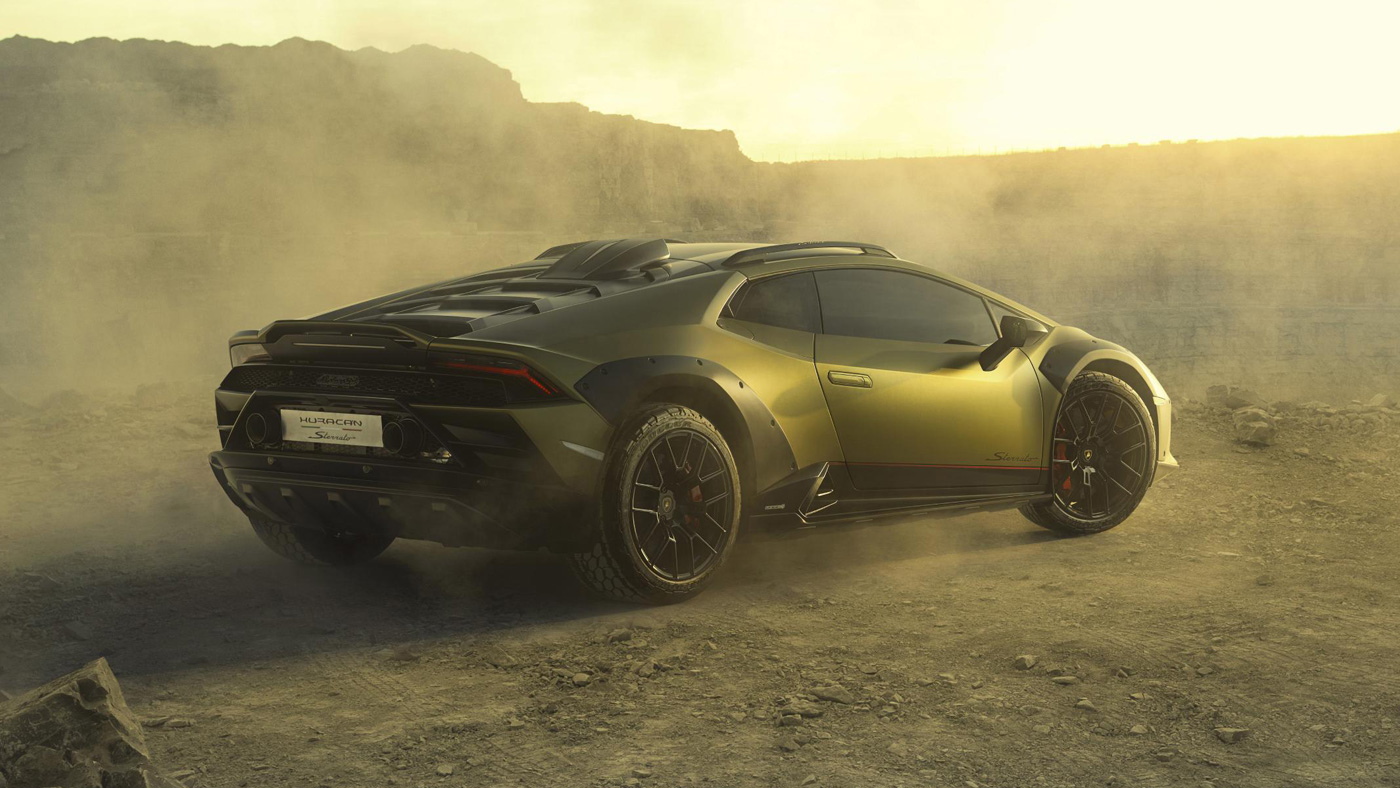
Much like the equally cool 911 Dakar, the Sterrato is a rally-ready version of the Huracán, straight from the factory, equipped with a raised suspension, additional lighting, and protective body armor for off-road adventures.
All of that gear is made to be used, and few things feel cooler than sliding sideways down a dirt trail in a Lamborghini wedge.
Typically, when someone mentions a “jacked-up Lambo,” they’re talking about one stuck on a curb or wrapped around a telephone pole, not something off-road capable.
But the Huracán LP610-4 Sterrato—simply known as the Sterrato—is different. This version is raised by 1.7 inches, making it perhaps the closest thing to an off-road-ready Italian supercar we’ve encountered.
To our surprise, it may well be the finest iteration of the baby Lambo. As with the many Huracán variants that came before, the Sterrato is stylish and lightning-quick.
However, unlike those designed for racetracks or smooth roads, this one comes equipped with run-flat Bridgestone Dueler All-Terrain AT002 tires, a lifted suspension, and roof rails for a rack—helpful if you want to bring more than the frunk’s modest four cubic feet of storage.
The raised ride height, combined with updated electronically controlled dampers and softer springs and anti-roll bars, brings a new level of ride compliance that’s never been part of the Huracán’s DNA.
Driving a standard Lambo in Michigan generally means bracing for impact—dodging potholes and bracing for random debris, like plastic bottles bouncing off the undercarriage.
Given that Michigan’s paved routes often resemble Italian gravel roads—sterrato means “dirt road” in Italian—this Huracán feels like it’s found its true environment.
It rides comfortably, with tires ready to absorb cracks, ruts, and rough patches. Think of it as the Marshawn Lynch of supercars: it’ll barrel through obstacles when needed, but with an open stretch, it’ll vanish in an instant.
It might not own a Super Bowl ring, but the $2600 rally lights shine like it does.
Unlike the similarly intentioned Porsche 911 Dakar, the Sterrato lacks a height-adjustable suspension. Yet, its softer suspension setup draws attention to the car’s inherent chassis rigidity.
At low speeds, the suspension can make some clunky noises—like a loose ball joint on the anti-roll bar—but overall it performs well. The low-grip tires, which give up at 0.96 g on the skidpad, might seem uncharacteristic for a Lamborghini. Still, the steering feel and feedback are exceptional.
Best of all, the reduced grip allows drivers to explore the car’s handling limits on public roads without alarming anyone—inside or outside the vehicle.
The limited traction—along with likely additional tuning adjustments—changes the chassis balance significantly.
When pushed to the limit, the Sterrato breaks traction gradually, with neither end snapping first, although the rear will drift out under throttle input. Quick steering corrections are all it takes to stay on course.
We never found ourselves out of shape. If a rally school were looking for the ideal car to demonstrate the Scandi-flick technique on gravel, the Sterrato might be an even better pick than a Subaru WRX—assuming it fits the budget. Ours came in at $384,394 as tested.
4. Hyundai Ioniq 5 N
Electric vehicles have been quick for quite some time, but they haven’t always been truly fun. The Ioniq 5 N changes that and in a way no internal combustion engine SUV ever could, which is a bonus.
A Hyundai electric SUV outrunning the quickest offerings from Lamborghini, Aston Martin, and Porsche might not be shocking today, but watching that same Hyundai carve up a track sideways without hesitation certainly is.
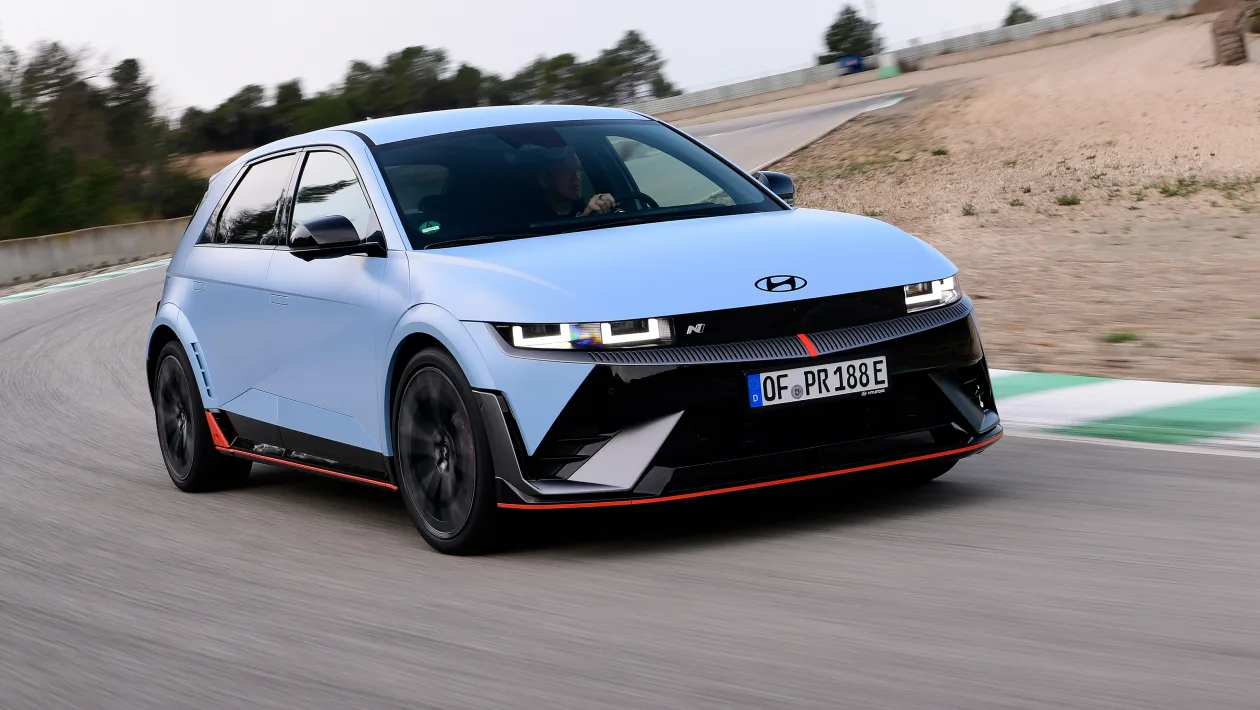
The 5 N’s ability to rotate and its balanced chassis aren’t just the result of electronic gimmicks, though it has no shortage of those if you’re interested.
Drift mode, artificial “engine” sounds, and simulated transmission “shifts” via paddle shifters can all be mixed and matched through a rather complex interface. Still, the coolest thing is that the Ioniq 5 N doesn’t need any of those extras to make you grin.
Since making its debut as a 2022 model, the Hyundai Ioniq 5 has consistently appeared. It boasts eye-catching design, excellent value, reasonable pricing, and an engaging driving experience.
Simply put, it’s an electric SUV that’s hard not to appreciate. The lineup includes both single- and dual-motor configurations, producing between 168 horsepower and 320 horsepower.
Additionally, there’s the high-performance Ioniq 5 N variant, which generates 641 horsepower and offers matching handling prowess, though we cover that version in a separate review.
Its driving range is solid, with the most efficient configuration projected to achieve over 318 miles per charge.
However, if you opt for the more powerful 320-hp version, you can expect to make more frequent stops to recharge.
Fortunately, one of the Ioniq 5’s standout features is its industry-leading charging speed, which makes powering up on longer journeys quicker and less of a hassle compared to many competitors.
Inside, the Ioniq 5 impresses with a sleek, comfortable, and tech-forward cabin. It offers more interior space than competing models like the Ford Mustang Mach-E and the Volkswagen ID.4.
All things considered, the Ioniq 5 is one of those exceptional vehicles that fully achieves its intended purpose, combining numerous strengths with virtually no notable drawbacks.
Also Read: Top 10 Cars With the Best Cooling Systems for Long-Lasting Engines
5. Toyota Tacoma (4×4 Manual)
The final manual 4×4 pickup still available for purchase in the U.S. is the Tacoma. That fact alone makes it a pretty big deal.
The newest generation of the Tacoma has undergone a significant modernization, with bolder styling, more powerful engines, and a roomier rear seat.
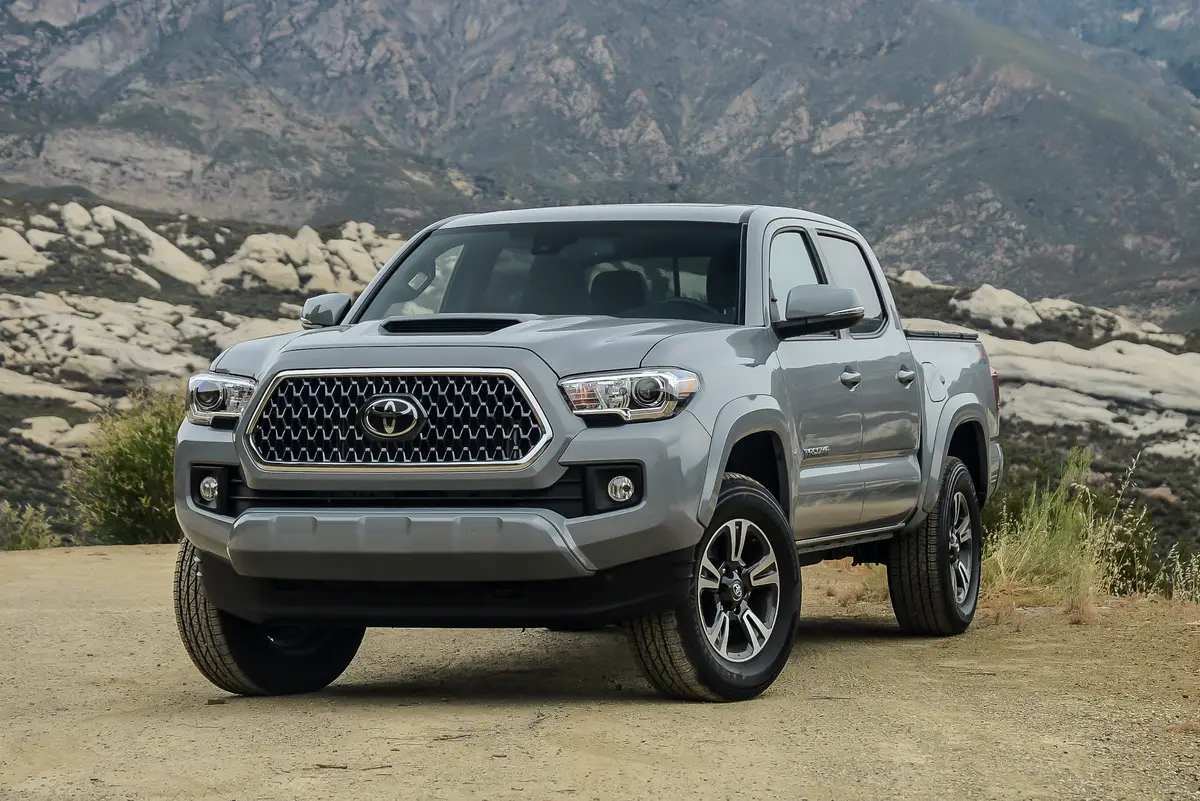
Yet, in a nod to its traditionalist roots, Toyota has kept the manual transmission alive not as a pricey special feature or a base-model exclusive, but as a proudly offered option in the middle of the lineup.
Owning a Tacoma is already cool, but you know someone is a true enthusiast when you climb into their new Toyota Tacoma and spot a shifter with an H-pattern.
Many of today’s pickup trucks drive more like crossovers or SUVs, offer ride quality comparable to that of passenger cars, and are equipped exclusively with automatic transmissions.
The 2024 Toyota Tacoma TRD Sport defies all of that—thankfully, at least in one key area. While it wears a thoroughly updated exterior, this all-new Tacoma sticks to its roots as an old-school truck, forgoing the increasingly refined feel of its rivals—for better or worse.
Toyota’s loyal customer base continues to embrace the Tacoma specifically because it holds onto traditional characteristics, and with other manufacturers moving away from manual gearboxes, the Tacoma gains another nostalgic edge: it remains the only pickup still offered with a stick shift.
For buyers who favor the modernized direction of other trucks, this manual transmission may be one of the few compelling reasons to take a closer look at the new Tacoma.
That six-speed manual transmission isn’t available across the entire Tacoma range. Only a handful of trims—from the broad selection of work-focused models, daily drivers, and serious off-road variants—offer it.
On the entry-level side, there’s the base Tacoma SR (available with four-wheel drive and a crew-cab configuration), while in the mid-tier range are the TRD-badged models, such as the TRD Off-Road and the TRD Sport model reviewed here.
The manual transmission is exclusively mated to the Tacoma’s 2.4-liter turbocharged inline-four engine, producing 270 horsepower and 310 pound-feet of torque—slightly less than the automatic’s 278 horsepower and 317 pound-feet.
Hybrid Tacomas, referred to by Toyota as i-Force Max models, don’t come with the manual option, as their electric motor is integrated within the automatic transmission. Likewise, none of the XtraCab extended-cab versions offer the manual either.
Cars Half Their Value
Depreciation is a pain in the arse for new car buyers, but for those of us who spend time crawling the classifieds it can be fantastic. Here are five cars that are now half the price they were when new.
1. Subaru Impreza WRX STI
When the third-generation Impreza debuted in 2007, it sent shockwaves through the automotive world.
The aggressive saloon silhouette of previous generations yes, even the ‘bug eye’ models with their unmistakably angry presence was replaced by a rather unremarkable hatchback.
But once the initial surprise wore off and enthusiasts took a closer look, it became evident that the WRX STI variant derived from this hatchback was actually quite impressive.
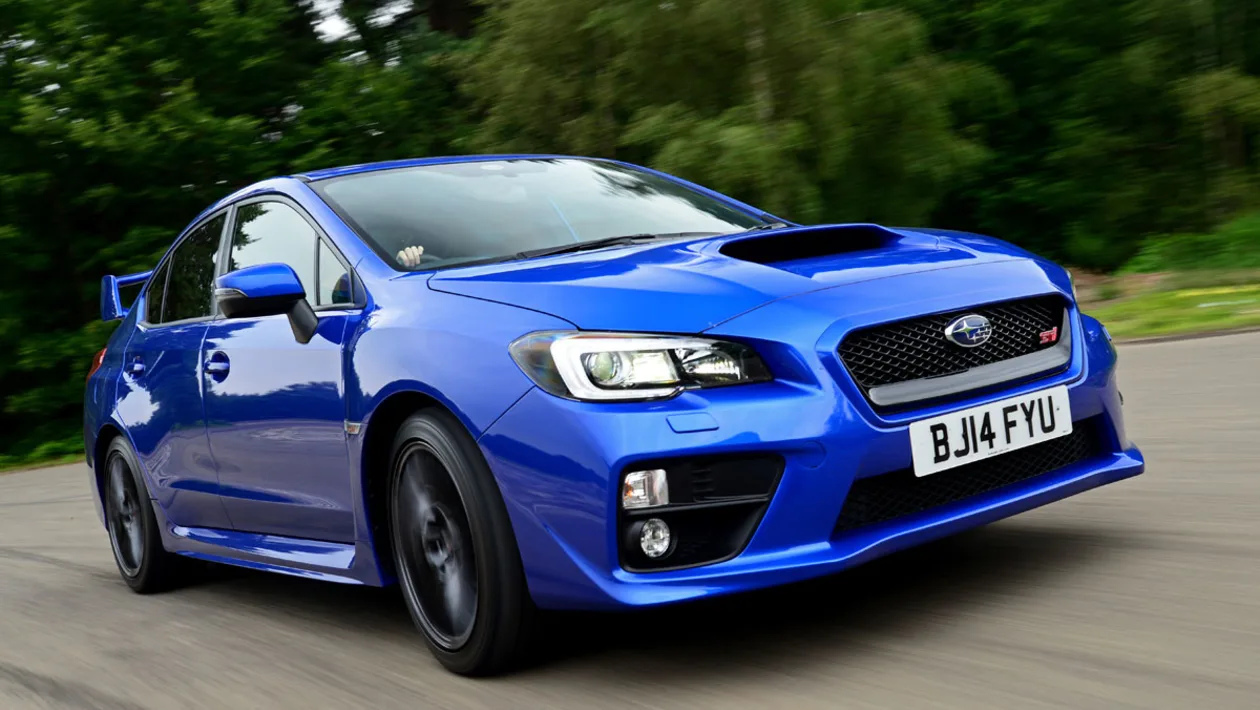
It featured a wider track, and the flared arches required to accommodate it gave the car the aggressive stance it had been missing.
Under the hood, the 2.5-litre engine produced 304bhp, and a driver-controlled mode selector allowed for torque distribution between either 35/65 or 50/50 front and rear.
When new, the WRX STI was priced around £30,000. But just four years later, depreciation hit hard you can now pick up one of these rally-inspired beasts for around £16,000. Starting in 2011, Subaru also reintroduced the WRX STI in the more classic saloon body style.
2. BMW E92 M3
With so many E46s in the hands of CT staff, the E92 M3 doesn’t often take center stage around here but thanks to the unforgiving force of depreciation, its moment has finally arrived.
When new, the E92 M3 would have set you back upwards of £50,000, but today, used examples are steadily approaching the £25,000 mark.
For that price, you get the legendary S65 V8 engine, which made its debut in this model and sits proudly beneath a distinctive bonnet bulge.
Producing 414bhp and 295lb ft of torque, the E92 M3 rockets from 0 to 62mph in just under five seconds, making it a serious contender in the performance car world.
When BMW announced the M3 would switch to a V-8 engine for the 2007 model year, enthusiasts met the news with hesitation.
The two previous generations, the E36 and E46 M3s, had earned their place in performance car history with their refined and beautifully engineered inline-six engines, regarded as some of the most balanced German coupes ever produced.
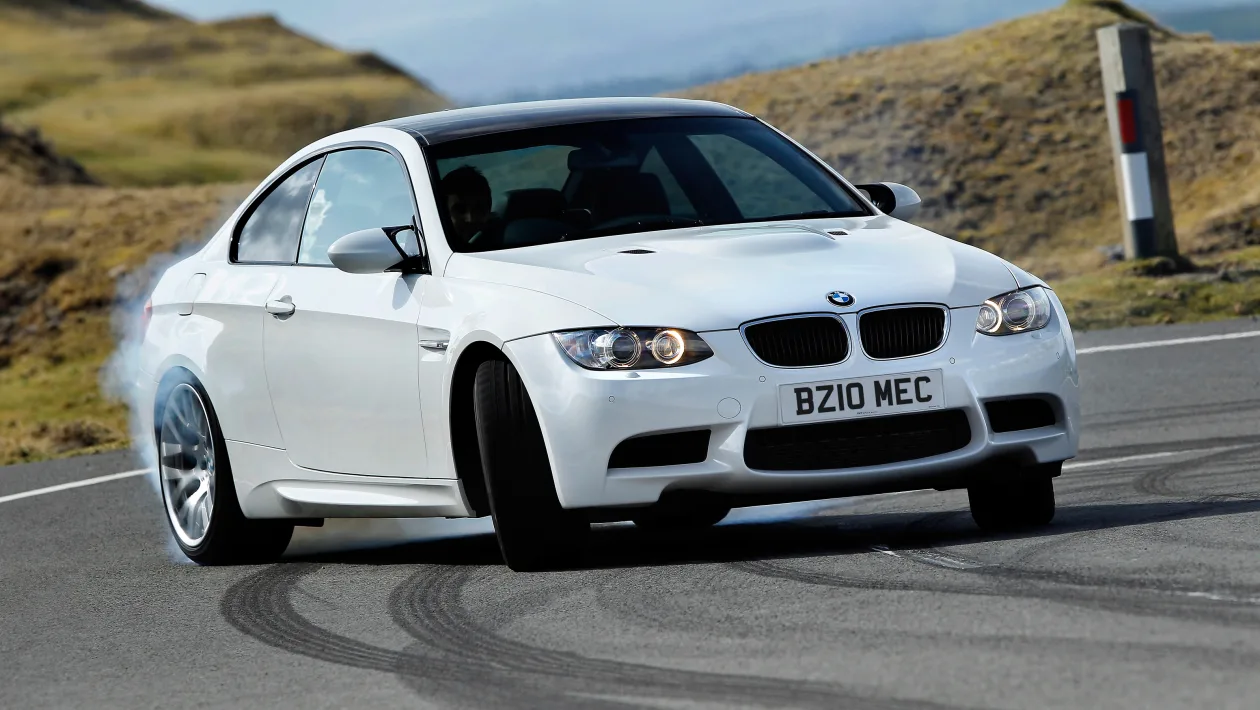
The addition of two cylinders raised concerns that the M3 would lose its precision and become a heavier, more brute-force machine.
The E92 M3 was designed to go head-to-head with Audi’s RS4 sedan, which used a 4.2-liter naturally aspirated V-8 producing 420 horsepower. At that time, BMW’s M division was still firmly against turbocharging.
In 2007, the company explained its stance, stating, “cylinders larger than 500cc are less than ideal, so it had no choice but to go to a V-8.”
And what an engine it was. Though it had less displacement than Audi’s V-8, BMW’s 4.0-liter S65 came close in output, delivering 414 horsepower when new.
It also revved significantly higher, with a redline set at an astonishing 8400 rpm—still the highest-revving engine BMW has ever installed in a road car.
The block was cast in the same facility where BMW-Sauber built its Formula 1 engines, and the complete unit weighed only 445 pounds—33 pounds less than the outgoing 3.2-liter inline-six.
Any doubts about the V-8-powered M3 not living up to its lineage were quickly put to rest once drivers took it for a spin.
“It’s a car you could drive every day, yet it’s capable of delivering a level of performance that cars costing twice as much would struggle to match,” Evo’s Richard Meaden said in his first drive review.
Editor-in-chief Tony Quiroga called the BMW an “astonishingly impressive performer” in a three-way comparison test between it, an RS4, and a Mercedes C63 AMG. Shaun Bailey said its performance was “downright silly and put many true sports cars to shame.”
Driving a V-8-powered M3 in 2024 only reinforces its legacy. Even more than 15 years after its introduction, it stands out as possibly the most complete product BMW M has created.
Compared to its predecessors, it’s more refined and livable as a daily driver, yet also quicker and more capable on the track.
The balanced dynamics enthusiasts feared might be lost have only become more apparent with time. While the engine is undeniably the centerpiece, it doesn’t overpower the overall experience.
The hydraulic steering, though not quite as communicative as that of the E46, remains wonderfully weighted and responsive, offering a deeply engaging drive.
3. Mercedes-Benz W204 C63 AMG
This isn’t merely a C-Class with a larger engine and a few flashy exterior touches far from it. The W204 underwent a full AMG transformation to become the C63, and the result was nothing short of jaw-dropping.
Its aggressive styling stood out even among far more exotic vehicles, and the engine had so much torque it could break traction at the rear wheels with nothing more than a slight brush of the accelerator.
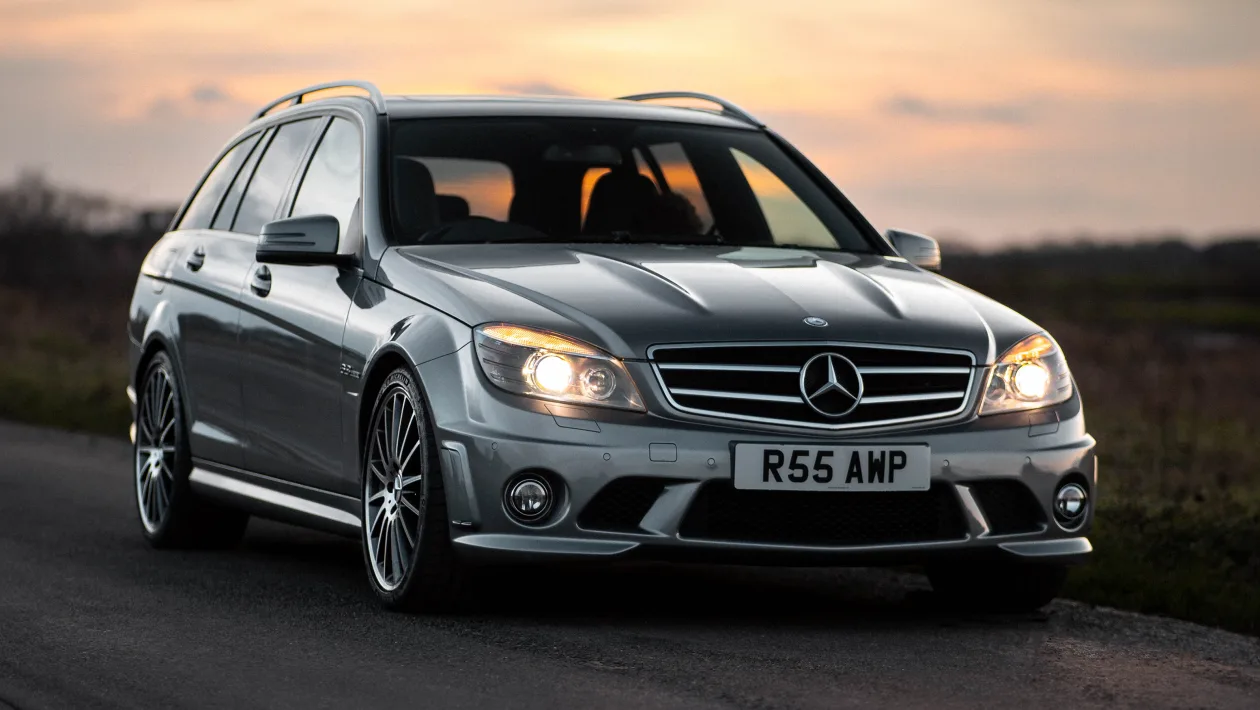
Just like the M3 it competed with, the C63 originally came with a price tag north of £50,000. While Affalterbach’s beast has retained its value a bit more than its BMW rival, finding one for under £30,000 can still be a challenge.
That said, it’s an incredible amount of car for the money and if you’re good at negotiating, you might just sneak close to that magical 50 percent depreciation line.
For 2025, the Mercedes-AMG C63 receives several notable updates, both in terms of technology and performance.
Among the key changes are the introduction of the latest MBUX3 infotainment software, 5G compatibility, and a center-mounted airbag to enhance passenger safety.
Performance-wise, buyers can now opt for an AMG high-performance ceramic composite braking system, offering enhanced stopping power for more demanding driving situations.
The pricing for the 2025 C63 begins at $87,200 and reaches up to $89,250 depending on the selected trim and additional features.
The standard C63 trim already includes a comprehensive list of equipment and capabilities, making it a solid choice for most buyers.
However, for an additional $2050, the Pinnacle trim adds some desirable upgrades, such as augmented reality video for the navigation system, a head-up display, and Mercedes’s innovative “Digital Light” LED headlamp system.
Under the hood, the C63 no longer carries the twin-turbo V-8 engine of its predecessor. Instead, it now features a turbocharged 2.0-liter four-cylinder engine.
While this downsizing might seem like a downgrade, the powertrain is significantly enhanced with a 201-horsepower electric motor and an electric turbocharger that virtually eliminates turbo lag.
The result is a plug-in hybrid system that generates a staggering 671 horsepower—surpassing the output of rivals like the BMW M3 and the Cadillac CT4-V Blackwing.
Although it offers limited all-electric driving capability (around 6 miles), the system is designed to replicate the thrilling performance of the previous V-8 model while improving fuel efficiency.
In our initial test drive, the new C63 impressed with its agile handling and explosive acceleration.
We evaluated the car on both a race track and public roads and found that it offers a more composed and comfortable ride than the outgoing model. The suspension is firm but never harsh, and the steering is precisely weighted, delivering a satisfying level of feedback.
While the brake pedal could benefit from a bit more firmness, the overall braking performance was excellent, stopping from 70 mph in just 139 feet.
We also had the opportunity to test a European-spec version of the C63, which achieved a 0–60 mph time of just 2.9 seconds—0.7 seconds faster than the previous generation.
Although the complex hybrid system sometimes makes its presence known during aggressive acceleration—shuffling power between the axles through a two-speed transmission—it remains smooth and seamless during everyday driving.
Overall, the 2025 C63 represents a bold evolution of AMG performance, blending cutting-edge hybrid technology with the brand’s legendary driving dynamics.
4. Nissan GT-R
The Nissan GT-R has always been considered a performance bargain straight from the showroom. With capabilities that challenge far more exotic and costly machines, its value proposition was strong even when new.
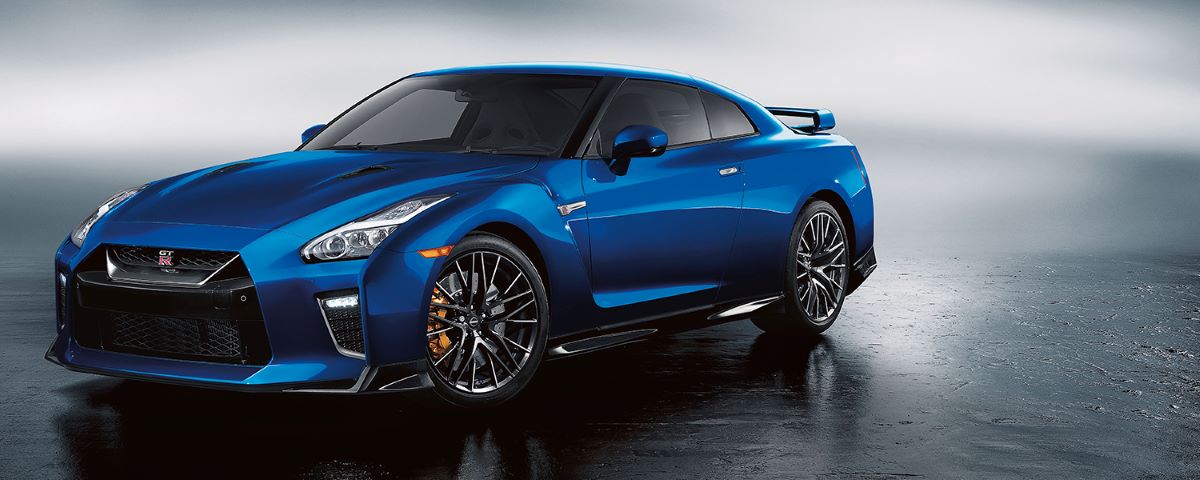
Now that these cars have firmly dropped below the £40,000 mark, they’re nothing short of an outright steal.
Offering the assurance of all-wheel drive and staggering performance for just a bit more than the price of a brand-new Civic Type R it’s pretty clear which one most enthusiasts would choose.
Nissan’s legendary GT-R, which has been in production since 2007, has officially been retired.
Over the past few years, Nissan has been gradually phasing out the sports car, market by market, as the aging model could no longer meet evolving regional regulations.
The GT-R was discontinued in Europe in 2021, production for North America ended in 2024, and now the R35 generation is in its final stages, with orders no longer being accepted in Japan as the remaining inventory is being sold off.
With the GT-R’s official retirement, attention now turns to when the next-generation model will arrive.
According to Ponz Pandikuthira, Nissan’s Chief Planning Officer for the Americas, the next version is still a few years away due to the need for a new powertrain, which is not yet ready.
“The next generation will need some level of electrification for performance as well as compliance,” Pandikuthira told.
A pure internal combustion engine that meets emissions standards would not be able to generate the 600-plus horsepower required for the GT-R’s expected performance.
While not every GT-R owner takes their car to the ‘Ring, it’s important that the vehicle retains the capability to do so.
The reason for this delay is essentially because Nissan is not ready to execute such a plan just yet.
The automaker is working on solid-state batteries, with its “All Solid-State Battery” (ASSB) technology slated to hit the market by 2028.
These batteries could provide a lightweight, energy-dense solution necessary for a partly electrified version of the GT-R. If such a vehicle were to take inspiration from the Hyper Force concept, Nissan enthusiasts would likely be pleased.
While Nissan originally aimed to introduce solid-state batteries by 2026, that timeline has been pushed to 2028. However, it remains undecided which vehicle will be the first to feature this groundbreaking technology.
5. Ferrari F430
The Ferrari F430 stands as a true modern classic. With its clean, timeless design that still turns heads today it’s hard to believe this car first hit the roads 11 years ago.
Back then, getting behind the wheel of this Prancing Horse would have required at least £120,000, but now, you can pick one up for around £60,000.
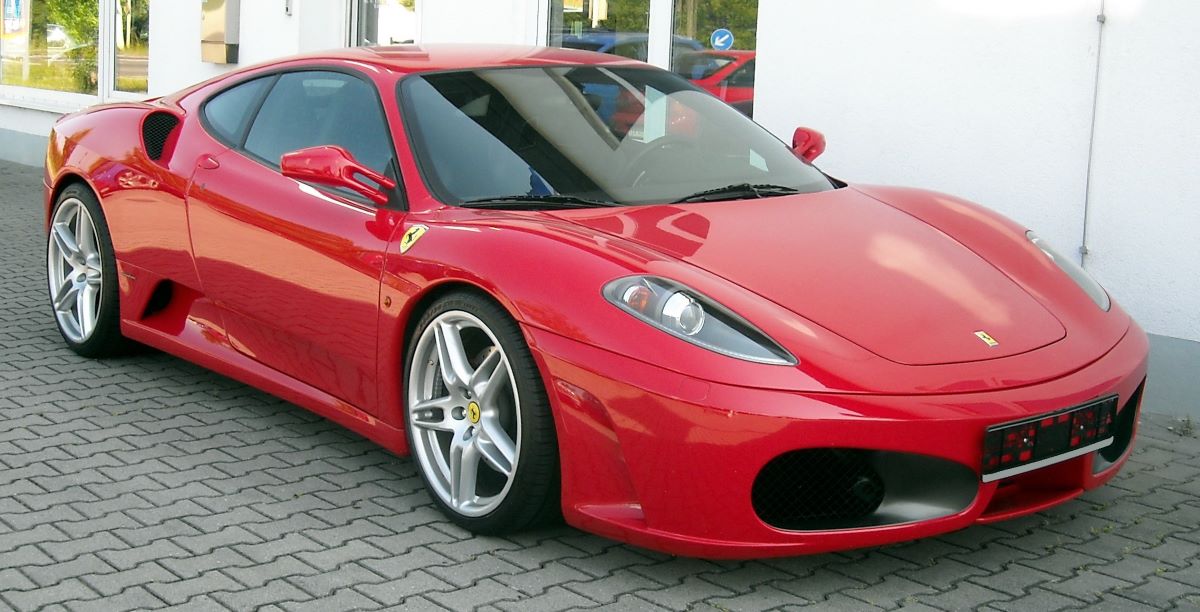
Of course, “just” is a relative term it’s still about £60,000 more than I can personally manage but once you consider what you’re getting for that money, the appeal becomes crystal clear.
First off, there’s the engine: a 4.3-litre naturally aspirated V8 that ranks among Ferrari’s best, producing 483bhp.
The sound it makes is absolutely incredible, and in the Scuderia version, I’d argue it delivers one of the finest engine notes ever heard in a production car.

